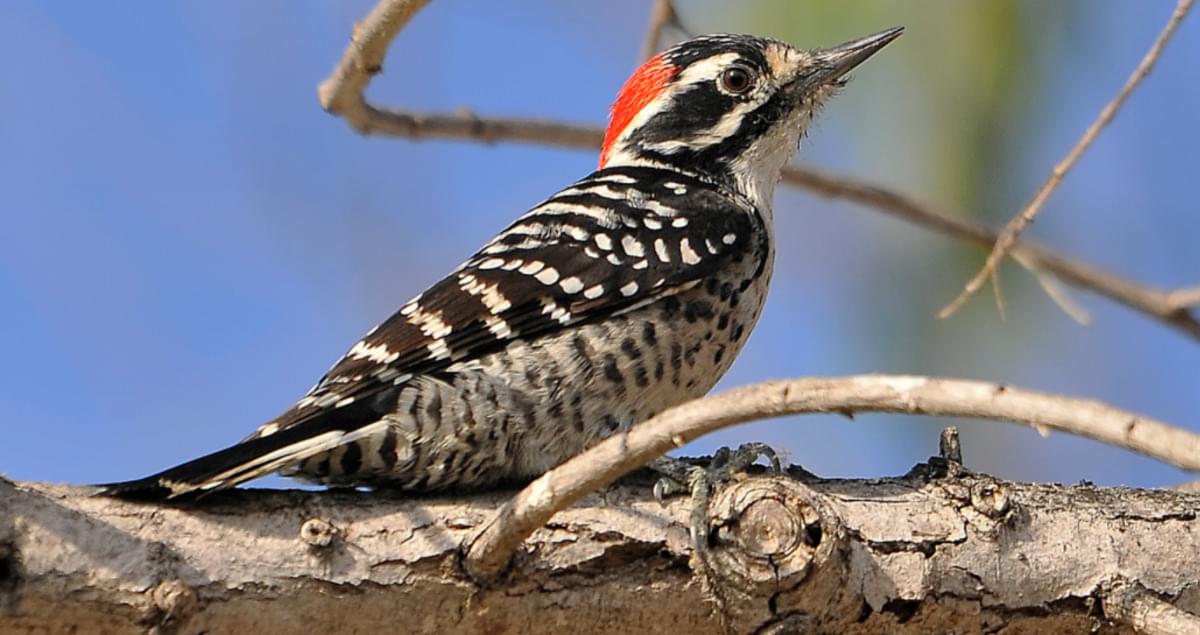
Nuttall’s Woodpecker
The Nuttall’s Woodpecker occurs only in California and Baja California and is strongly associated with oak woodlands. They are non-migratory, and maintain yearround territories. Males and females come together in the spring for breeding but do not spend time together after late summer.
Male Nuttall’s Woodpeckers, distinguished by its bright red cap, do the nest cavity excavation, and a new cavity is created for each breeding season. The loud, incessant drumming into tree trunks heard in the forest in the spring is evidence of those industrious nesting efforts.
The subsequent abandoned tree holes / nest cavities are in very hot demand by a number of other bird species that actively compete for those vacated natural nest sites the following year. In the Urban Forest cavity nesting species include the Western Bluebird, House Wren, and Tree Swallow. Due to increased urban and agricultural development, there has been a dramatic reduction in forested habitat particularly mature oak woodlands; therefore, relatively few used tree holes become available each spring.
Man-made wooden nest boxes help to fill that urgent gap and have proven to be essential to the breeding success of many cavity nesting bird species. The Urban Forest has a robust nest box program in place, carefully managed throughout the spring/summer nesting season by skilled volunteers.
The head of a woodpecker has been specially adapted for wood excavation for nesting and for feeding. The spongy bones inside the head optimize its hammer-like striking of wood with its strong, powerful bill without injuring the brain.
Woodpeckers eat insects and larvae found within tree trunks. They have long tongues that can be up to a third of their entire body length and can extend several inches past their beaks. The tongues are coiled around a specialized set of bones and muscles within the head. When the muscles contract the specialized bone, the long tongue can extend, suspend, and move to reach food hidden deep inside trees. Woodpeckers certainly do take “using your head” to the next level.
Bird gallery



